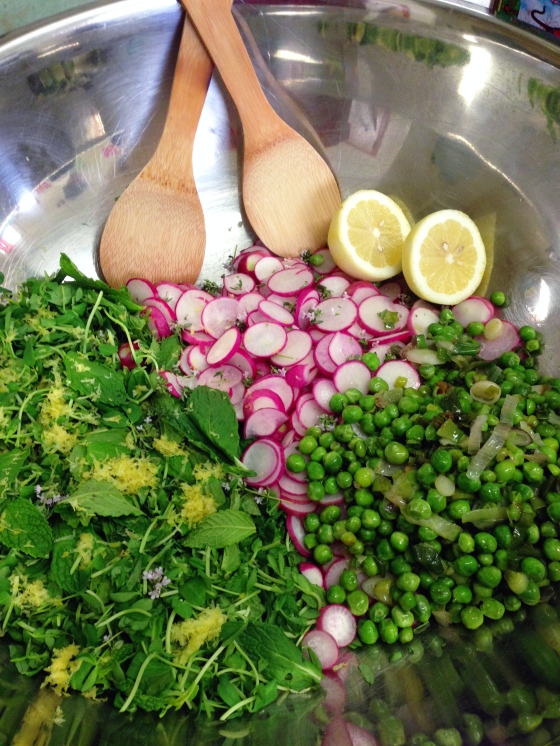Food has always been regarded as medicine in cultures throughout the world. People reached for plants, vegetables, and even animal proteins to cure ailments. Food was the first source people went to before seeking other kinds of treatments. With the advantages and brainwashing of convenience food, we forget what is essential for us to maintain and improve health. As pointed out by many scientists and doctors, our health became complicated with the introduction of packaged and processed foods, overproduction of wheat, corn, and soy, and the industrialization of meat, poultry, and dairy.
The Standard American Diet (SAD) consists of highly processed meats and wheat. Americans are over-consuming food with little nutritional benefits and not consuming enough of whole foods- mostly vegetables. The SAD diet has no room for fresh, whole foods and has lead to the rise of Western Diseases– breast cancer, Type 2 Diabetes, and cardiovascular diseases. The dependency of processed foods is also giving rise to allergies and sensitivities to foods like wheat and diary.
All of us need to eat more vegetables for good health, weight loss, and reversing diseases. I am not advocating vegetarianism. What I am saying is that the more vegetables and plant-based foods you consume daily will have the most positive impact on your health. The best possible sources of obtaining micronutrients that your body needs to function healthily come from plant-based foods. Vegetables are grown on a farm, not manufactured in a lab, and do not require a degree to figure out that they are good for you.
Plant foods are complex systems and are the best sources of vitamins, minerals, antioxidants, phytochemicals, and fiber. These nutrients have hundreds of roles in the body. Our body uses them to make hormones, send nerve impulses, maintain bone and teeth strength, bolster the immune system, prevent cell and tissue damage, increase digestion and absorption, and maintain a normal heartbeat.
Examples of minerals include calcium, magnesium, phosphorus, and sodium. Minerals are mostly found in plant foods and are essential for healthy minds and bodies. Minerals are not vulnerable to heat and cooking does not destroy them. It is much easier to obtain minerals from food than vitamins. Vitamins are easily destroyed due to heat and storage duration. Examples of vitamins include vitamins A, B, C, D, E, K, and carotenoids. Vitamins and minerals depend on each other to be useful. For example, vitamin D is necessary for calcium absorption from food. Similarly, too much of one nutrient can cause a deficiency of another nutrient, since they can interfere with each other’s function. Though, this is rarely the case when you eat varied, whole foods.
Vegetables come in a vibrant array of colors, not just green. These colors signify the type of vitamins and antioxidants are present in them. Purple foods have the antioxidant anthocyanins, which is prevents aging, boost memory, and fights off diseases like Alzheimer’s. Red foods include strawberries, pomegranates, and tomatoes. These foods are known to prevent cancer, reduce pain and inflammation, and lower blood pressure. Orange foods include pumpkins, bell peppers, and carrots. These foods are high in vitamin C and beat-carotene, which help support the immune system, delay cognitive aging, and rebuild collagen in the skin. In order to ensure you are getting all of these different nutrients, you have to eat a variety of foods. Sticking to just a few vegetables throughout the year will make you loose out on the benefits other plant-based foods offer. Eating a varied, vibrant diet is the best way to get sufficient amounts of the vitamins and minerals your body needs.
It is pretty difficult to overdose on micronutrients that come from whole, unprocessed foods since they contain low levels. We only need miniscule amounts of them, hence the name micronutrients. On the contrary, supplements may contain fillers and additives, and come in high dosages that can be harmful. Many supplements also contain contaminants such as arsenic and mercury. Our body stores certain nutrients and releases them as needed, thus toxic levels can build up. Dietary supplements are unregulated and do not have to go through testing for safety. Supplements are not intended to replace whole foods, but support people with certain conditions who just cannot get all the nutrients. It is wise to talk to a doctor or nutritionist before taking supplements. Whole foods are complex and contain many nutrients, antioxidants, and fiber that a pill cannot provide. Vegetables are also a lot more affordable than quality supplements.
Pesticide exposure is linked to many health concerns and should not be overlooked. Though, the health benefits of vegetables outweigh the alternative of not eating them at all. Nutrient deficiencies from the lack of vegetables are also the cause of many health issues. Fresh, whole foods are often replaced with processed foods when they are eliminated from the diet, causing more health troubles. I recommend choosing food from sustainable farms. If you are not sure about where or how the food is grown, opt to buy organic, local, and/or seasonal. Local and seasonal food is usually sprayed with less or no pesticides, since they do not have to travel as far. Of course, the best way to learn and ensure you are getting high-quality food is to shop at the farmers market or join a CSA. You can ask the farmers directly about their farming practices. Buying 100% organic produce may not always be possible, but you should at least try to get organic for the vegetables (and fruits) that have the most pesticide residue. You can download the list onto your phone. If none of these are options for you, start your own vegetable garden. Do what you can to feed yourself and your family more fresh vegetables.
Vegetables should be the star of your plate, not cast off to the side. So what are you waiting for?
This is part one of a three-part series on vegetables. Next week, I will discuss simple ways to eat more vegetables and include a protein-balanced vegetable recipe.



































